Tungsram Halogen metal halide lamps


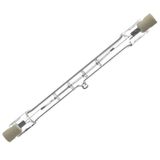

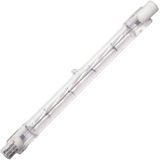
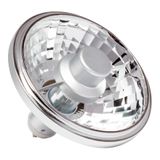
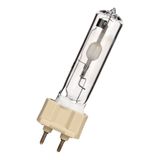
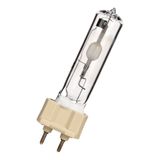
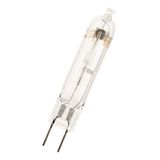
Tungsram’s MH portfolio is still a workhorse where big lumen packages, stable color, and long throws matter. In hot bays, dusty plants, or legacy optics that LED can’t easily match, engineers keep MH in the spec to hit uniformity targets without rewriting the whole electrical and photometric plan.
tungsram metal halide lamps performance and variants
Ceramic and quartz types from 35–400 W cover 3000–4200 K (up to ~5600 K specialty), CRI 80–95, efficacy ~80–110 lm/W, and warm-up about 2–4 minutes. Hot-restrike is typically 5–15 minutes unless paired with pulse-restart gear. Caps include G12/PGZ12/GX10 and E27/E40 for elliptical or tubular envelopes. Observe IEC 62035 (HID safety) and IEC 61167 (MH); pair with controlgear per EN/IEC 61347. In practice, teams specify containment glass and Tmax checks for closed luminaires when planning relamping windows. Engineers still choose tungsram metal halide lamps when a one-for-one relamp must hold beam shape and CCT.
tungsram mh lamps electrical and gear pairing
Square-wave electronic gear stabilizes color on ceramic types; low crest-factor (≤1.8) and EOL cut-off avoid cycling. Magnetic ballast packs need matched ignitor and capacitor kvar to maintain PF ≥0.9 and keep feeder THD predictable. Keep ignitor leads short, bond screens 360° at gland plates, and rate surge ≥4 kV L-N for industrial switchboards. Many retrofit tenders call out tungsram mh lamps explicitly so existing fuse curves and cable sizes stay valid.
tungsram high intensity discharge lighting where MH still wins
Large sports halls, high-mast aprons, tall warehouses, and foundries still favor MH for punch and throw. Specify exact lamp/optic photometry to avoid beam shift, and confirm hot-restrike against blackout procedures. When mixed with LED, hold MH for heat-exposed zones and drive aisles that need tight beam control. For spec clarity, projects often name tungsram high intensity discharge lighting alongside ballast families and capacitor tables to lock interoperability.
tungsram industrial mh bulbs for harsh bays
Steel, paper, waste-handling, and cement lines push ambient and contamination. Choose IP65/IP66 luminaires, stainless fasteners, and higher surge immunity. Where VFDs sit nearby, document EMC practice—separate SELV and mains, use 360° braid clamps, and route ignitor cables away from control I/O. Field crews tag tungsram industrial mh bulbs by wattage, cap, and CCT so aisle-by-aisle swaps don’t disturb aiming.
tungsram commercial metal halide lamps for retail and sports
CRI in the 90s with 3000–4200 K helps merchandising, pools, and arenas. Color shift over life is predictable if ceramic types are used with square-wave gear; plan maintenance by burning hours, not just calendar dates. For glare control, choose optics with proper cut-off and verify lumen depreciation in tendered LM-80/TM-21-based models where available. Many facility teams still specify tungsram commercial metal halide lamps to keep approved photometric files and emergency lighting calculations intact.
tungsram floodlight mh lights optics and aiming
Narrow, medium, and wide distributions exist for apron and façade work. Confirm tilt limits to protect glass and seals, and check wind-area when replacing older floods. For long throws, tubular clear lamps reduce stray light; coated ellipticals suit closer work. Commissioning notes typically list tungsram floodlight mh lights by optic code, mounting height, and aiming angles so repeat visits are fast.
tungsram arc tube metal halide lamps ceramic vs quartz
Ceramic arc tubes hold color and lumen maintenance better; quartz offers broader wattage coverage and cost leverage. Thermal behavior differs: ceramic prefers tighter gear control and lower crest factor; quartz tolerates more variation but shifts color sooner. Publish relamping rules—spot relamp for critical color zones, group relamp for yards. On upgrades, many specs mention tungsram arc tube metal halide lamps to distinguish ceramic SKUs from legacy quartz part numbers.
Tungsram integration with ballasts and luminaires
Keep lamp codes, ballast families, ignitor topology (superimposed vs series), and capacitor kvar on one coordination sheet. Verify luminaire pulse-withstand (2–5 kV) and containment; note Tmax at the label, not just catalogue nominal. When migrating areas to LED, leave MH where ambient or vibration defeats commodity drivers and align CCT so mixed technologies keep uniformity.
Selection criteria for B2B buyers
Fix target lux, mounting geometry, and spill limits, then choose wattage and cap. Lock gear type (electronic square-wave vs magnetic), EOL cut-off, and surge class. Choose CCT/CRI per task, check hot-restrike against evacuation plans, and confirm cable distances vs ignitor spec. Publish strip lengths, torque, and bonding method so panels and field crews repeat the same EMC result across floors.
Advantages of working with Bankoflamps
Project pricing is set per job with near-hour quote turnaround by EAN/MPN and live EU stock before crews are booked. The portal shows lead times, shipment tracking, and downloadable price lists with validity dates you can plan against. Trusted buyers can use post-payment up to 30 days. We consolidate partials so lamps, ballasts, ignitors, capacitors, and luminaires arrive room-bundled by riser. Your account manager cross-checks wattage ranges, cap types, coordination tables, surge notes, Tmax, and labelling—keeping deliveries site-ready across France, the Baltics, Germany, Spain, Italy, Belgium, and the Netherlands.